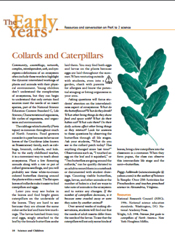Noticing natural phenomena
By Peggy Ashbrook
Posted on 2016-12-14
This week friends who live on opposite sides of the country messaged me to go look at the Moon and a bright “star” in the southern skies, the planet Venus. The Geminid meteor shower is also happening but the urban light pollution in my area plus the full Moon makes seeing a meteor unlikely. Still I will spend some time watching the sky tonight before bedtime (thanks Bob King!).
 It’s nice to have friends who share my interests—science and beauty. Children especially want to have an adult acknowledge their discoveries, stories and significant moments. When one child points out the special features of his shoes (“new,” “sparkly,” “lace-up”), the rest quickly chime in with observations about their shoes. After listening to a classmate telling about the bird she saw, others will share their stories of birds spotted. Outdoors children make discoveries and observations that are new to them. Adults may not be interested in that slug or the way water drops hang at the edges of a leaf but these are powerful moments to show you care about the child, demonstrate how to ask questions, share your own experience, suggest a source of information or a direction for further exploration.
It’s nice to have friends who share my interests—science and beauty. Children especially want to have an adult acknowledge their discoveries, stories and significant moments. When one child points out the special features of his shoes (“new,” “sparkly,” “lace-up”), the rest quickly chime in with observations about their shoes. After listening to a classmate telling about the bird she saw, others will share their stories of birds spotted. Outdoors children make discoveries and observations that are new to them. Adults may not be interested in that slug or the way water drops hang at the edges of a leaf but these are powerful moments to show you care about the child, demonstrate how to ask questions, share your own experience, suggest a source of information or a direction for further exploration.
As authors Amy Laura Dombro, Judy R. Jablon, and Charlotte Stetson note, “What you say and do matters.” In their book, Powerful Interactions: How to Connect with Children to Extend Their Learning, they describe forming relationships and how to “use your relationship to stretch knowledge, skills and understanding together.”
How can we make opportunities to observe natural phenomena such as the Moon available to all children?
♦Taking a short nature walk at the beginning or end of recess is one way to incorporate more time to interact with nature. The Moon is sometimes visible during the day—an event that can be noted on the class calendar or documented with drawings. We can ask children to talk about whatever they have noticed while outside on school grounds and later take the class outside to see or experience it for themselves.
♦Making brief daily weather observation discussions part of a circle time or morning meeting adds scientific data collection to the day. As one teacher noted in the NSTA Learning Center Early Childhood Forum, children will begin to notice patterns if the daily observations are graphed. The question, “What are some ways or activities to teach kindergartners about weather patterns?” was posted in the Early Childhood Forum under “Weather and Elementary.” One educator responded, “Each week, a new student is picked as “weather reporter” and the weather for each day is observed, discussed, and graphed. The students really seem to understand the difference between kinds of weather and are able to identify all types. I have found the weather graph and the weather discussion during our calendar time to be very beneficial to the students…When children are aware of what is happening, they begin to notice patterns. It is interesting to compare graphs from week to week and month to month. We say, ‘Climate is what you expect, weather is what you get.’”
♦Early childhood educators can let their students’ families know about books at the public library that feature topics related to current topics of conversation and learning at school.
 ♦Gardening at school can involve children in experiencing natural phenomena such as soil structure, pattern of sunlight and shade, relationships between insects and plants, and life cycles of plants. My butterfly garden always includes collards because they are a preferred larval food for the caterpillars of Cabbage White butterflies. Cabbage whites are the seasonally early and late butterflies in my region, making them ideal for observing more than once during a school year. You can read the April 2007 Early Years column, “Collards and Caterpillars,” on the NSTA Learning Center—it’s free to non-members too!
♦Gardening at school can involve children in experiencing natural phenomena such as soil structure, pattern of sunlight and shade, relationships between insects and plants, and life cycles of plants. My butterfly garden always includes collards because they are a preferred larval food for the caterpillars of Cabbage White butterflies. Cabbage whites are the seasonally early and late butterflies in my region, making them ideal for observing more than once during a school year. You can read the April 2007 Early Years column, “Collards and Caterpillars,” on the NSTA Learning Center—it’s free to non-members too!
Sources for information about the night and day sky
Astro Bob: Celestial happenings you can see from your own backyard.
https://astrobob.areavoices.com/
Astronomy magazine
http://www.astronomy.com/observing/sky-this-week/2016/12/the-sky-this-week-for-december-8-to-december-18
EarthSky blog
http://earthsky.org/
Sky and Telescope magazine
http://www.skyandtelescope.com/observing/sky-at-a-glance/
Disclaimer: The views expressed in this blog post are those of the author(s) and do not necessarily reflect the official position of the National Science Teaching Association (NSTA).



